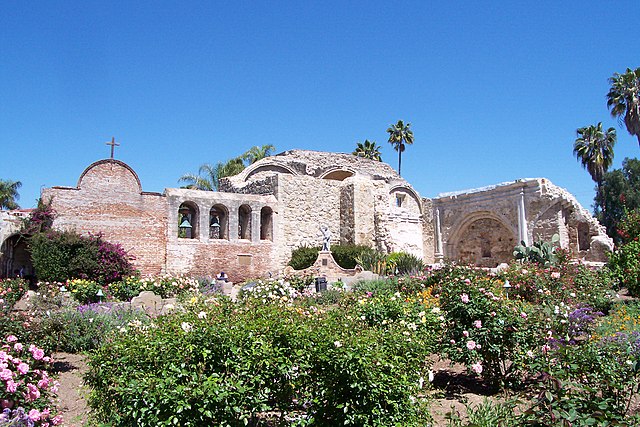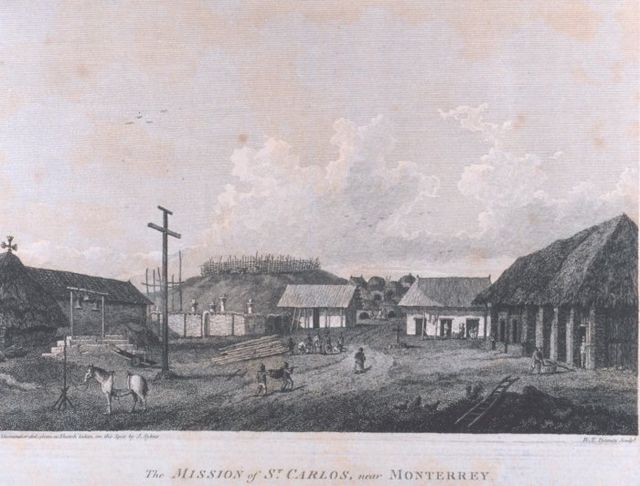Mission San Diego de Alcalá
Mission Basilica San Diego de Alcalá was the second Franciscan founded mission in The Californias, a province of New Spain. Located in present-day San Diego, California, it was founded on July 16, 1769, by Spanish friar Junípero Serra, in an area long inhabited by the Kumeyaay people. The mission and the surrounding area were named for the Catholic saint Didacus of Alcalá, a Spaniard more commonly known as San Diego. The mission was the site of the first Christian burial in Alta California. The original mission burned in 1775 during an uprising by local natives. San Diego is also generally regarded as the site of the region's first public execution, in 1778. Father Luis Jayme, California's first Christian martyr who was among those killed during the 1775 uprising against the mission, lies entombed beneath the chancel floor. The current church, built in the early 19th century, is the fifth to stand on this location. The mission site is a National Historic Landmark.

The church façade of Mission San Diego de Alcalá
Plaque of the Mission San Diego de Alcala
Mission San Diego de Alcalá as it stood circa 1900. Note the missing Campanario, and the exposed church, which fell into disrepair.
Spanish missions in California
The Spanish missions in California formed a series of 21 religious outposts or missions established between 1769 and 1833 in what is now the U.S. state of California. The missions were established by Catholic priests of the Franciscan order to evangelize indigenous peoples backed by the military force of the Spanish Empire. The missions were part of the expansion and settlement of New Spain through the formation of Alta California, expanding the empire into the most northern and western parts of Spanish North America. Civilian settlers and soldiers accompanied missionaries and formed settlements like the Pueblo de Los Ángeles.
A view of Mission San Juan Capistrano. At left is the façade of the first adobe church with its added espadaña; behind the campanario, or "bell wall" is the "Sacred Garden." The Mission has earned a reputation as the "Loveliest of the Franciscan Ruins."
Mission San Luis Rey de Francia, circa 1910. This mission is architecturally distinctive because of the strong Moorish lines exhibited.
The Missionaries as They Came and Went. Franciscans of the California missions donned gray habits, in contrast to the brown that is typically worn today.
A drawing of Mission San Carlos Borromeo de Carmelo prepared by Captain George Vancouver depicts the grounds as they appeared in November 1792. From A Voyage of Discovery to the North Pacific Ocean and Round the World.







